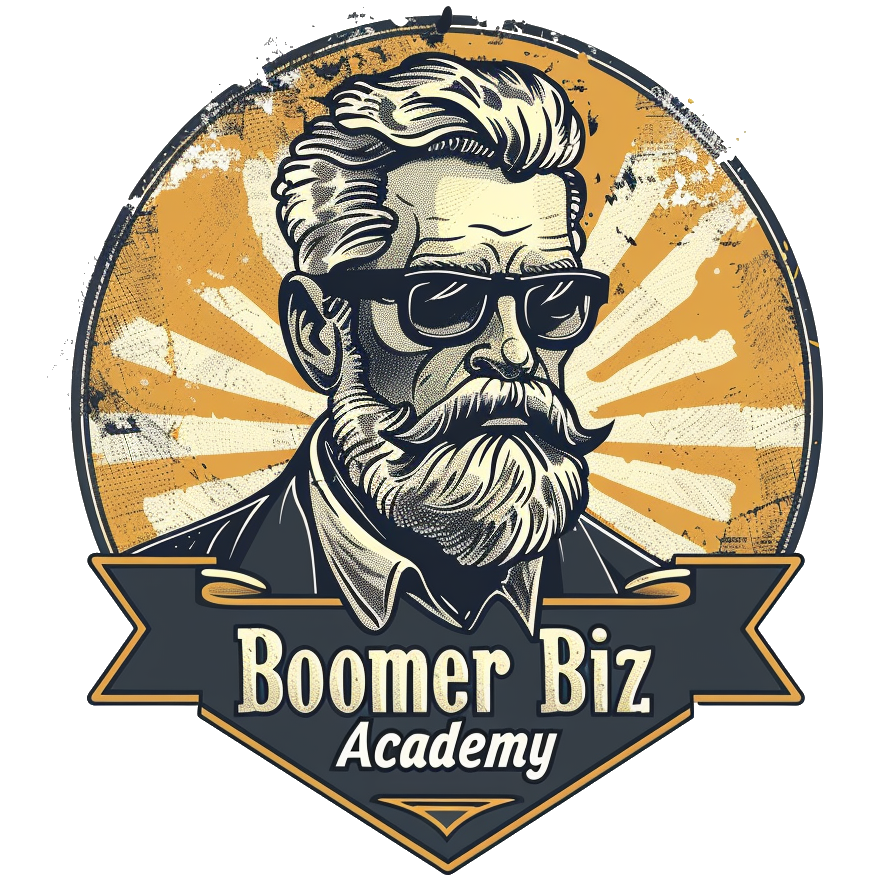
Introducing Generative AI: A New Frontier in Technology
In this post, "Guide to Generative AI for Boomers" we'd like you to imagine you’re composing a heartfelt greeting card. In the past, you might have spent hours browsing through ideas or struggling with just the right phrasing. Now, with the click of a button, you can have a smart digital assistant propose clever wording or even help design a visually appealing layout. That’s the essence of Generative AI—sometimes called Creative AI or AI-Driven Content Generation—and it’s transforming our day-to-day experiences in ways we never thought possible.
Understanding Generative AI
Generative AI isn’t just a fancy name for a new tech trend; it’s a technological leap that enables computers to create new, original content. Whether it’s text, images, or music, Generative AI learns from vast amounts of data and then uses that knowledge to generate something fresh and unique.
At its core, Generative AI relies on neural networks—algorithms designed to mimic the way the human brain processes information. These networks sift through billions of data points to identify patterns, relationships, and context. When you provide a prompt—like “design a birthday card with a playful theme”—the AI system taps into its learned understanding to craft something truly one-of-a-kind.
Real-World Use Cases
You may have already interacted with Generative AI without even realizing it. For instance, ChatGPT by OpenAI can help you brainstorm ideas for a report, refine your writing style, or simply chat about a topic you’re curious about. It’s like having an always-available writing coach that won’t judge you for any late-night questions.
Over in the design world, platforms like Beautiful.ai make creating everything from event flyers to photo albums a breeze. They offer suggestions on color schemes, layouts, and even the type of text that might fit best—like having a graphic designer on call, minus the hefty consulting fees.
Generative AI can also help with tasks like drafting product descriptions for online stores, composing personalized emails for marketing campaigns, or even generating music. It’s already revolutionizing multiple industries:
- Writing and Editing: AI-driven suggestions to improve clarity, tone, and consistency.
- Marketing: Quick generation of ad copy, social media content, and blog posts.
- Design: Automated layouts for presentations, brochures, and personalized greeting cards.
- Healthcare: Early research into AI-generated molecules for drug discovery, as well as AI-assisted diagnoses from medical images.
If you want to join the cool kids, get on the newsletter mailing list. 🙂
Ethical and Privacy Considerations
Of course, any transformative technology brings its share of challenges. Generative AI can inherit biases found in its training data. If that data is skewed or incomplete, the AI’s output may unintentionally reflect those same biases. Moreover, highly realistic AI-generated images or videos, known as “deepfakes,” can spread misinformation if not properly managed.
Privacy is another concern. Generative AI often needs large amounts of data, raising questions about how personal information is stored and used. Reputable developers address these concerns by implementing strong encryption, data protection measures, and clear consent policies.
Intellectual property rights also come into play: if an AI learns from someone else’s copyrighted work, who truly owns the final output? Legal frameworks are still catching up, but the guiding principle is transparency—ensuring users understand what the AI has been trained on and how generated content is produced.
35 Years of Expertise: AI-Powered Content Creation Courses
If you’re intrigued by the possibilities of Generative AI for boomers and wonder how to tap into its power, consider enrolling in specialized courses that draw on 35 years of industry know-how. These programs typically teach:
- Advanced prompt engineering—so you can get the most creative, accurate output from AI tools.
- Effective content marketing strategies—turning AI-generated writing, graphics, and more into revenue or personal branding assets.
- Ethical AI development—learning how to identify and counteract biases in your projects.
Whether you’re a small-business owner seeking to up your marketing game or a retiree wanting to explore new hobbies, these courses can provide valuable insights into using AI responsibly and effectively.
Embracing the Future of Generative AI
Generative AI is more than just a buzzword—it’s an evolving toolkit that can make our work and personal projects more efficient, engaging, and creative. As neural networks become ever more sophisticated, expect to see AI draft legal documents, customize travel itineraries, or even help you compose original songs.
The key is not to see AI as a replacement but as an enhancement. Much like a calculator speeds up math or a camera helps capture memories, Generative AI is here to expand our creative potential. Embracing it means staying adaptable and open to continual learning, ensuring we harness the technology’s benefits while mitigating risks.
References and Further Reading
- ChatGPT by OpenAI – Powerful language model for writing, Q&A, and brainstorming.
- Beautiful.ai – AI-driven design platform for presentations and marketing materials.
- Stanford Institute for Human-Centered Artificial Intelligence – Research hub focusing on the societal impacts of AI.
- IBM - What Is Generative AI? – Comprehensive resource on AI technology and business applications.
Disclaimer: The information in this post reflects current understandings of Generative AI and is subject to change as the technology evolves. Always follow best practices and consult official documentation when implementing AI-driven solutions.
In the end, Generative AI stands poised to redefine how we think about creativity, efficiency, and the art of making something new. Whether you’re jotting down a personal note or crafting a professional marketing strategy, AI has the potential to amplify your capabilities—turning everyday tasks into inspired endeavors.
